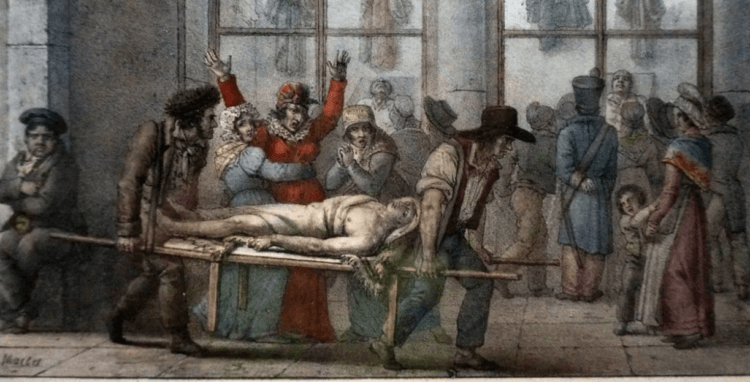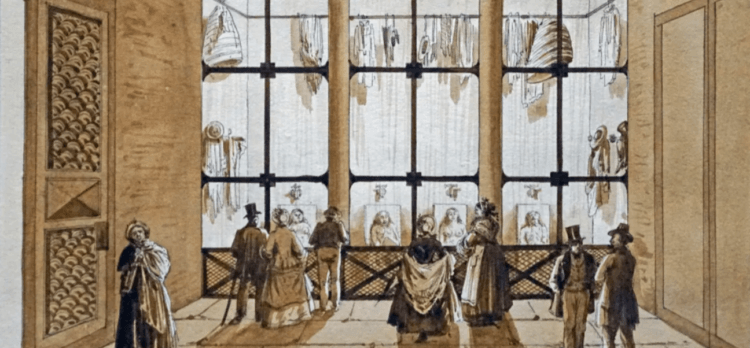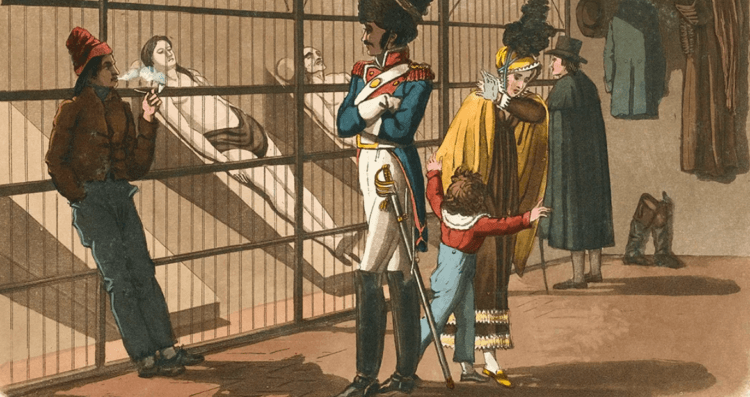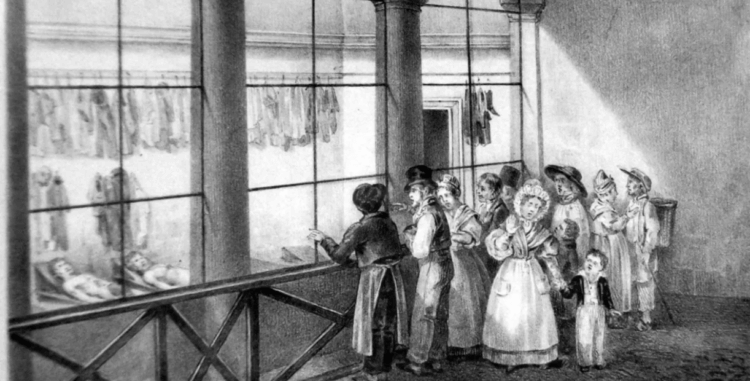It may seem something horrifying and abnormal, but the display of corpses in Paris in the 19th century was one of the entertainments of onlookers, or flâneurs, as people were then called, wandering aimlessly through the city streets. Moreover, over time, the morgue, located behind Notre Dame Cathedral, began to be called the “museum of death.” For example, this is how it was designated in British guidebooks. Anyone could come here and look at the corpses displayed behind glass. But what is most interesting is that the bodies of dead people were put on display not at all for the entertainment of townspeople and tourists, but for a completely different reason.

The Paris morgue became a place of entertainment for local onlookers in the mid-19th century. Image source: iflscience.com
Exhibition of human bodies in Paris
Those who wanted to look at corpses existed not only in Paris in the 19th century. Currently, the Body Worlds exhibition, which translated means “worlds of bodies,” has become one of the most famous and at the same time scandalous. Its exhibits are plastinated human corpses, that is, embalmed in a special way using a synthetic polymer.
The exhibition brought fame and wealth to its creator, German anatomist Gunther von Hagens, as it was a huge success all over the world. However, the idea itself, as you already understood, is not new. The exhibition of corpses in the capital of France was also incredibly popular in the 60s and 70s of the century before last.
The Paris morgue had a special exhibition room for this purpose, where the dead were displayed behind glass. They wore only thin strips of fabric, but their clothes hung nearby so that visitors could see what these people wore during the last minutes of their lives.

Exhibition hall of the Paris morgue. Image source: iflscience.com
According to How Stuff Works, the morgue's exhibition hall, depending on who was exhibiting, could attract tens to hundreds of thousands of visitors. One of the most popular exhibits was the “woman cut in two,” which was recovered from the Seine in 1876. Hundreds of thousands of visitors came to the morgue to look at her.
Interest in the corpses was also fueled by the press, which published terrible details of the deaths of certain people. In addition, at that time the Grevin Museum, which was a “living newspaper,” was popular in Paris. The idea was to recreate recent murders using wax figures. The morgue allowed readers to dive deeper into the story and see the victims up close with their own eyes.

Initially, corpses were put on display for identification. Image source: daily.jstor.org
Why were corpses displayed in Paris
As mentioned above, initially the exhibition hall was not a place for entertaining onlookers. Let us remember that the industrial revolution began in the middle of the 19th century. Many people went to the city in search of work in new, sometimes very dangerous places of work. Often workers died, but their identities were unknown. Therefore, the corpses of unknown people were taken to the exhibition hall so that relatives or friends could identify them and take the corpse for burial.
Even if a person’s identity was known, but he was from afar, his body was also sent under glass to those who were waiting to gain an identity. Anyone could examine the corpses, and over time this activity turned into entertainment.
Why the museum of death was popular
According to JSTOR, the morgue attracted people not so much because of morbid curiosity and desire to have fun as much as a sense of community. Visitors in the exhibition hall sympathized with the corpses and were horrified.

There are also other opinions on this matter. For example, Professor Vanessa Schwartz, an employee of the University of Southern California, believes that the morgue exhibition hall and the “living newspaper” were the prototype of modern crime documentaries.
More likely, different visitors had different motives. It should be noted that death and corpses have attracted people at all times. For example, in the Middle Ages, public executions attracted huge crowds of people in the central squares of cities. And even earlier, in Egypt and some other civilizations, there was a real cult of death, and therefore corpses were mummified using special balms. Nowadays, people enjoy watching shocking videos of people dying or, as mentioned above, visiting the Body Worlds exhibition.
Follow the link to our ZEN CHANNEL. We have prepared for you a lot of interesting, exciting materials dedicated to science.
From this we can conclude that the popularity of the museum of death is associated not only with the desire of people to sympathize with the dead. Sooner or later, death awaits everyone, perhaps this is the reason for such attention to corpses and death. Although people sometimes don’t even know what their curiosity stems from.